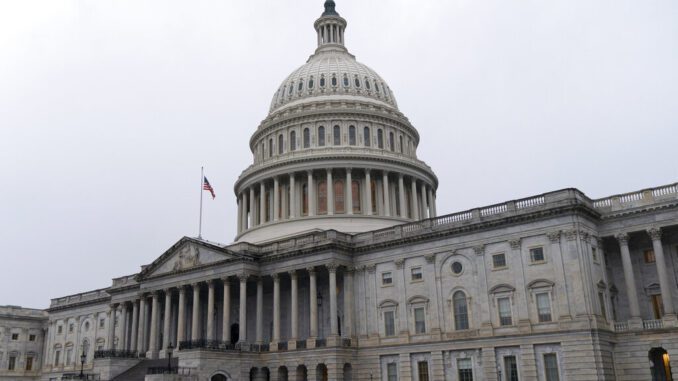
This is the second and final installment of James Capretta’s article to reform employer-based health care insurance first published in North State Journal 12/23/20.
Defined contributions and standardized coverage
Under this proposed reform, workers would pay more in taxes and premiums, but they would come out ahead if the overall reform lowered the cost of insurance without significantly diminishing the value of their insurance coverage (as discussed in more detail below). For instance, an 8% drop in premiums would mean a net gain of $1,800 annually for workers when taking into account their wage gains, the taxes they owe, and their premium payments.
Cutting health expenses by 8% is realistic with the right combination of policies. CBO has estimated that a similar reform in Medicare (“premium support”) would reduce overall costs by 8% after a transition period.
Comparable savings are possible with ESI if “premium support” reforms are attached to the new federal tax credits.
First, employers should be required to convert their premium payments into defined-contribution payments that their employees control so that workers will have strong incentives to enroll in low-cost plans. For instance, if an employer provides $15,000 in defined-contribution support for family coverage, and two plans are available with premiums of $18,000 and $19,000, workers choosing the less expensive option would save $1,000 annually.
Second, the benefits covered by competing ESI plans must be standardized as far as possible in terms of the medical care covered and the cost-sharing required by the enrollees. The firms themselves would need to enforce this requirement by ensuring the plan offerings they make available to their employees do not have glaring omissions of covered services, or arbitrary and unreasonable differences in deductible amounts and required copayments. The goal is to force intensive competition at the level of premiums charged for insurance and not to allow insurers to confuse the choice by altering the services that are covered by the plans. With standardized benefits, insurers would be forced to deliver cost control by eliminating waste and inefficiency in the provision of care, which is where the focus must be to slow overall cost growth.
Third, firms participating in this voluntary reform must give their employees meaningful coverage options. The benefits must be standardized, but workers should have a say in how strictly their plans manage care on their behalf.
Federal certification of high-value plans
In the 1970s and 1980s, the Health Maintenance Organization Act helped jumpstart the nascent managed-care industry. Something similar is needed today to encourage employers to offer plans with proven track records of high-quality and cost control. Requiring firms to offer at least one federally certified plan would ensure workers have access to the most cost-effective offerings, as measured by objective and uniform criteria.
Certified plans also should be required to maintain effective employee-engagement programs, including shared savings arrangements for workers who select low-cost and high-value providers of services. For instance, insurers should make price shopping for routine services and procedures an important factor in controlling cost growth by giving their employees a portion of the savings when they select providers of services with prices below a reasonable benchmark (such as the median price in the market area for that service). Further, certified plans should be required to demonstrate how they will protect enrollees from any and all surprise bills.
Private exchanges
Under the ACA, exchanges are used to organize the market for individuals buying coverage on their own. The exchanges bring together tens of thousands of consumers into larger pools, which improves the purchasing leverage of those shopping for coverage. Insurers establish uniform plan offerings and premiums for all participants in the same exchange pool.
Private exchanges also exist in the employer sector, with several large-benefit consulting companies sponsoring them for their clients, but enrollment has been modest.
The federal government could facilitate the emergence of a stronger private exchange system for employers by increasing the federal tax credit by 10% for coverage secured through a private exchange.
The federal government could facilitate the emergence of a stronger private exchange system for employers by increasing the federal tax credit by 10% for coverage secured through a private exchange. Firms using the exchanges would be relieved of having to organize coverage offerings for their employees; their only obligation would be to make defined contribution payments to the exchanges in support of the enrollment choices of their workers. The private exchanges would be required to follow premium support principles to ensure strong competition and cost control.
The private sector cannot do this alone
Job-based health insurance is a pillar of U.S. health care, but there are signs of stress. Cost pressures are contributing to wage stagnation and income inequality, which are serious concerns beyond what they imply for accessing needed medical care.
The private sector cannot fix ESI’s problems on its own because firms compete for workers through their benefit offerings.
Congress must step in and modernize ESI with stronger incentives for cost control. Firms should retain the power to pursue their own innovations and to tailor their offerings to the needs of their workers. But sensible reforms would help all firms keep premiums from squeezing what they can pay their workers.
That’s the key to ensuring employees continue to see value in retaining ESI as the main source of coverage for themselves and their families.
(This article was first published in The Bulwark by James C. Capretta who is a resident fellow and holds the Milton Friedman Chair at the American Enterprise Institute in Washington, D.C.)



